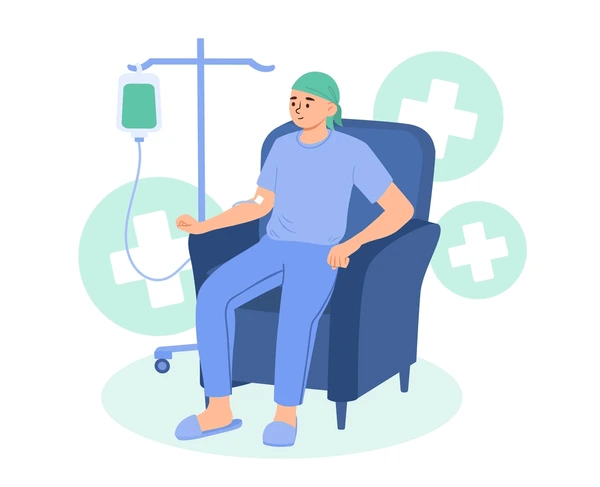Chemotherapy is a type of cancer treatment that uses drugs to kill or slow the growth of rapidly dividing cells, including cancer cells. It is a systemic treatment, meaning that it circulates throughout the body to reach cancer cells that may have spread to different parts. Here are key points about chemotherapy:

About chemotherapy
Goal of Chemotherapy:
- Destroy Cancer Cells: The primary goal is to eliminate or reduce the number of cancer cells in the body.
Types of Chemotherapy Drugs:
- Cytotoxic Drugs: These drugs directly attack and kill cancer cells.
- Targeted Therapy: Drugs that target specific molecules involved in cancer cell growth.
- Immunotherapy: Enhances the body’s immune system to fight cancer cells.
Administration:
- Oral Medications: Some chemotherapy drugs are taken by mouth.
- Intravenous (IV) Infusion: Many chemotherapy drugs are delivered directly into the bloodstream through a vein.
- Intramuscular (IM) Injection: Injections into the muscle.
Treatment Schedules:
- Cycle: A course of chemotherapy is often organized into cycles, with a period of treatment followed by a rest period to allow the body to recover.
- Frequency: Treatment frequency can vary, ranging from daily to every few weeks, depending on the specific regimen.
Side Effects:
- Nausea and Vomiting: Common side effects that can be managed with medications.
- Fatigue: Feeling very tired or weak is a common side effect.
- Hair Loss: Some chemotherapy drugs may cause hair loss.
- Bone Marrow Suppression: Reduced blood cell production, leading to an increased risk of infection, anemia, and bleeding.
- Peripheral Neuropathy: Numbness or tingling in the hands and feet.
- Mouth Sores: Inflammation and sores in the mouth.
Preventive Measures:
- Anti-Nausea Medications: Given before and after chemotherapy sessions.
- Supportive Therapies: Such as growth factors to stimulate blood cell production.
- Scalp Cooling: A technique to reduce hair loss during chemotherapy.
Treatment Plans:
- Curative: Used with the intent to cure cancer or achieve long-term remission.
- Adjuvant: Given after primary treatments (surgery, radiation) to reduce the risk of recurrence.
- Neoadjuvant: Given before primary treatment to shrink tumors.
Combination Therapies:
- Multi-Drug Regimens: Often, a combination of drugs is used to enhance effectiveness and reduce the risk of drug resistance.
Monitoring and Adjustments:
- Regular Assessments: Ongoing monitoring of the patient’s response to treatment and adjustments to the regimen as needed.
Post-Treatment Follow-up:
- Survivorship Care: Follow-up care to monitor for any potential long-term effects or late side effects of chemotherapy.





